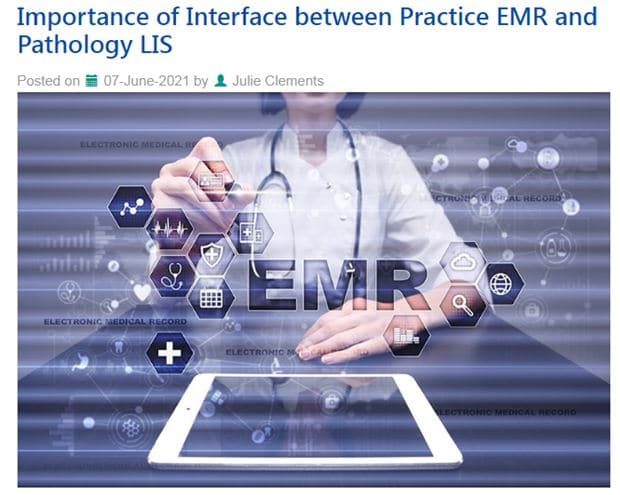A patient’s medical appointment with a physician is valuable time. Many providers rely on medical transcription outsourcing to create complete and accurate electronic medical records that tell the patient’s story and meet all legal, regulatory and auditing requirements. Physicians strive to utilize the precious time spent with the patient to deliver comprehensive care. However, the escalating demand for healthcare services, overcrowded waiting rooms, and the shorter visit are significant challenges when it comes to delivering quality care. Experts are touting shared medical appointments as the answer.

The concept of shared medical appointments – care delivered in a group setting – is not new. It was developed in the mid-1990s by Dr. Ed Noffsinger when he was at Kaiser Permanente. In this type of clinical encounter, one or more healthcare professionals provide care to a group of patients.
The American Academy of Family Physicians (AAFP) supports group visits and considers them a proven, effective method for improving self-care among patients with chronic conditions as well as increasing patient satisfaction, and improving outcomes. The basic features of a shared medical appointment are as follows:
- Multiple patients are seen as a group for management of chronic conditions or follow-up care.
- Patients attending shared appointments usually have something in common, such as medical condition.
- Group medical appointments can last as long as 2½ hours.
- Services include patient education and counselling with additional members of a health care team (such as a behaviorist, nutritionist, or health educator), physical examination, and clinical support.
- These visits are voluntary for patients.
- The visits provide a secure but interactive setting in which patients have improved access to their physicians.
Cleveland Clinic and Oakland, California-based Kaiser Permanente are among the leading US healthcare systems that are touting group medical appointments as a strategy to help both patients and physicians make the most of the office visit, according to a recent Washington Post report. Cleveland Clinic offers over 200 types of shared appointments, such as groups for diabetes or heart disease, male and female wellness, osteoporosis, prenatal and postpartum issues, chronic pain and cancer survivorship. Patients can see eight to 10 peers and a physician to discuss health challenges, nutrition and exercise for an hour or more each month.
A 2013 study reported group medical visits for diabetes patients helped reduce glycatedhemoglobin (HBA1c) levels. The Washington Post article describes how a 55-year-old man, who was severely diabetic and overweight, benefitted immensely from Cleveland Clinic’s group sessions. Traditional medical appointments had very little effect on his condition. Shared appointments covering 800 days helped substantially with weight and diabetes management and improved his control over his health.
According to Massachusetts General Hospital (MGH), group visits are especially beneficial to manage patients with chronic diseases, such as diabetes, asthma, ulcerative colitis, multiple sclerosis, cancer, and HIV. With their interdisciplinary approach to medicine, shared appointments include an individualized medical review as well as an educational and group discussion component.
A 1997 study found that group visits for chronically ill older patients resulted in less emergency room visits and repeat hospital stays, reduced the cost of care, and improved satisfaction among both patients and physicians. Studies have shown that compared with individual visits, group interventions are linked to clinically significant improvement in various medical, psychological and behavioural outcomes. Patients can share experiences and advice with one another.
A 2015 study published in the journal Healthcare policy reported that group visits allow providers to see more patients more efficiently. The study listed several tangible benefits of group sessions for providers:
- Shared medical visits enable more in-depth communication and a more holistic approach to care.
- Providers could teach the whole group at once, which reduced the need to repeat health education messages (e.g., reasons for a high HbA1c) across several individual visits.
- Providers witnessed reinforcement of key messages by patients sharing their own experience.
- Physicians reported that group medical visits provided more opportunities for in-depth patient-provider interactions.
- The sessions allowed providers to quickly address the common and predictable parts of a visit (e.g., blood pressure, weight) and focus on providing guidance on the complexity of living with different and often multiple chronic conditions.
- Providers benefited from peer patients providing their personal experience and emotional support.
- Patients are more comfortable interacting with physicians in the less formal environment of these sessions.
- Group sessions reduce physician burnout and improve their work-life balance.
By enabling providers to see more patients than their typical schedules allow, group visits could prove especially beneficial in the face of the looming physician shortage. However, the group approach may not be right for everyone. The Cleveland Clinic model says that shared medical visits may benefit patients needing routine follow up care due to chronic conditions, those who want more information about their specific health concerns, and people who need more time with their physicians for mind and body care. They caution that:
- Shared appointments cannot replace regular medical appointments with the physician
- They cannot diagnose and treat complex conditions or be used as a one-time consultation
- All urgent medical concerns should be addressed by a specialist immediately.
The traditional office visit is also a better option for people who have hearing problems, do not speak a shared language or have complex medical concerns.
Additionally, shared medical appointments may not be favoured by every doctor, especially those who are not comfortable working in a group setting. To succeed, the provider leading the group should have the required facilitation skills. The practice must also have the space needed to conduct the group visit.
Nevertheless, long waiting times and the physician shortage crisis are factors that may drive the popularity of group visits. The appointments, which are billed as medical visits, are covered by most insurance plans. The AAFP notes that, just as regular office visits, shared medical appointments should be documented in each participating patient’s medical record. The documentation should indicate the individual services provided to each patient as well as the services provided to the group as a whole at each encounter. Outsourcing medical transcription is a viable option for physicians who provide and document such appointments. It will reduce their workload and provide them with more time to deliver focused patient care. Quality medical record documentation is also critical to ensure appropriate reimbursement for services provided.


